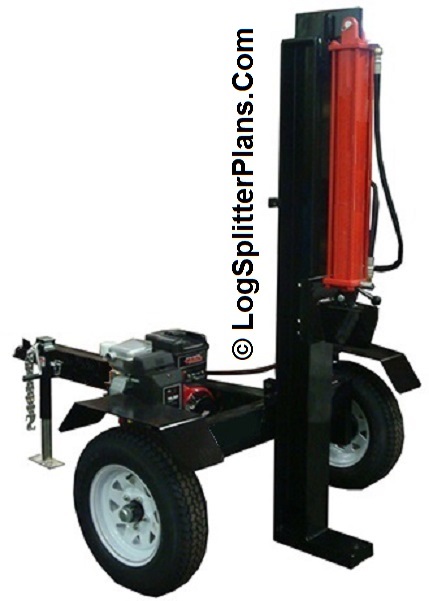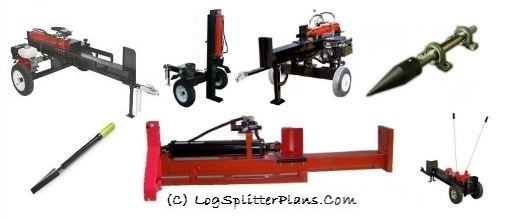Best Tools for Splitting Firewood
How to Split Hard Wood
Many of you may be finding it difficult to split firewood and may not be enjoying a whole day of workout with nature. For that purpose we have gathered here details of some of the best tools for splitting firewood.
Large diameter logs even are difficult to arrange, transport and use. Splitting such wood makes them more useful and splitting would even allow them to season quickly. When it comes to cutting wood that is really hard and has a large diameter, you may be finding it a task next to impossible. Though it is not impossible and with some useful tips you will be able to better deal with such work. Just with the use of right technique and tools, you will be able to split through a bulk stock of such pieces efficiently. You can use various tools such as mauls, wedges etc. and can split a hard wood to give it a desired shape for use.
Splitting Hard Wood:
 Choose
an appropriate tool: Splitting wood can be done with a number of different
firewood splitting tools. Each
one of these tools has varied capacities and conveniences of use. Thus
the first step towards achieving your goal of splitting hardwood is
to choose a proper tool that you can conveniently use for the purpose.
You may use a maul or a splitting wedge to deal with hard large pieces
of wood.
Choose
an appropriate tool: Splitting wood can be done with a number of different
firewood splitting tools. Each
one of these tools has varied capacities and conveniences of use. Thus
the first step towards achieving your goal of splitting hardwood is
to choose a proper tool that you can conveniently use for the purpose.
You may use a maul or a splitting wedge to deal with hard large pieces
of wood.
Using a Maul: A splitting maul is kind of an axe but it is thicker and stronger that makes it suitable for cutting through hard wood. This tool will have more weight than an axe and will be appointed with a sharp sledge hammer edge at the back of blade.
Using a Log Splitter Wedge: Use of a tool such as a log splitter for dealing with hardwood would make your task easier. These tools have the capacity to drive at the same place again and again until the wood splits completely.
Prepare Your Wood for Splitting:
- Begin with cutting the length shorter: Short hard wood logs would be easier to deal with for splitting. Shorter the length of wood easier would it be to deal with logs. Fix a length that is most suitable for you to use for the purpose, transport and store.
- Arrange Splitting Surface: Before you begin splitting, arrange for a chopping block. Chopping block will be area where you will be placing your log for splitting thus making the job easier for you. One of the best ideas is to have a wood surface around 6 inches from the ground. In order to do the jobs well, make sure that the block is neither too short nor too high.
- Location for Splitting: Now choose a proper location for splitting logs. Make sure that the area you will be using for this work should be completely clean from dirt and debris.
- Wear Proper Protection: Safety comes first in any plan of action and is priority here too. Before beginning splitting, make sure that you are well-prepared. Check if you are wearing safety gloves to keep your hands protected from any wood splinters. Working boots, safety glasses and proper clothing is something that you must take care of in order to avoid any incident.
4 Steps for Splitting Hard Wood:
Now that you have a proper setup, you can begin splitting logs:
Step 1: Log on Chopping Block:
 First
place the log that you need to deal for splitting over chopping block.
Make sure that it is stable and is lying in the center of the block.
An unsteady block can result in dangerous incident.
First
place the log that you need to deal for splitting over chopping block.
Make sure that it is stable and is lying in the center of the block.
An unsteady block can result in dangerous incident.
Step 2: Inspect Wood:
Now check the wood before trying to split. If your wood log has a crack, you should try to aim and hit in the same direction where the crack is. Any large knots found on the log must be avoided as you may spend hours on such knots and may not be able to crack them as they are likely to be twisted. Different methods should be used for splitting different types of woods. For example if you have oak, you may split through center or for instance maple that can be split through edges.
Step 3: Target Location:
Now that you have inspected log piece, you should decide on a location from where you want to split the hard wood. Visualize and set the location to guide your tool for splitting at the right place.
Step 4: Hold the Tool and Try Splitting:
If you are using a maul for splitting, now hold the tool firmly; give you knees a slight flex, lift the head by extending your arms straight in the right direction and slide down with the right strength. You may not be able to split on your first try and you may need to work your way multiple times to split through a tough wood. Strike again and again until the log splits.
Some Important Tips:
- All aspects of firewood production and storage should be considered to ensure you aren't wasting time or materials.
- There may be some woods that would split rather easily in comparison to others that may have moisture. It is best to split logs after felling.
- One common issue that may arise with the use of a maul for splitting is that it may get badly stuck in the wood piece. If that is the case, do not try hard and waste your efforts in trying to pull the maul out.
- Do not get yourself completely drained, stop and relax between splitting jobs.
- If wood you are splitting will be used for cooking, take time and make smaller stick. Smaller sticks will be easier to start fire and cooking.
- Maintain an appropriate position so if your tool misses target, it may not strike any part of your body.
- Make sure that no one stands behind or right beside you as slipping tool out of your hand can result in a deadly accident.
- Also ensure that you have someone nearby or a phone with you so you can call in case of emergency.
Conclusion
Splitting requires proper tool and technique to be used in order to get the desired results without causing any injury to you or to a companion. As you split a log piece in to smaller pieces of desired length, stack them and store wood in a proper place. Stack them in such a way that air can easily circulate around for seasoning wood before burning it. Keep it protected from rainfall as wood may decay in such cases.
